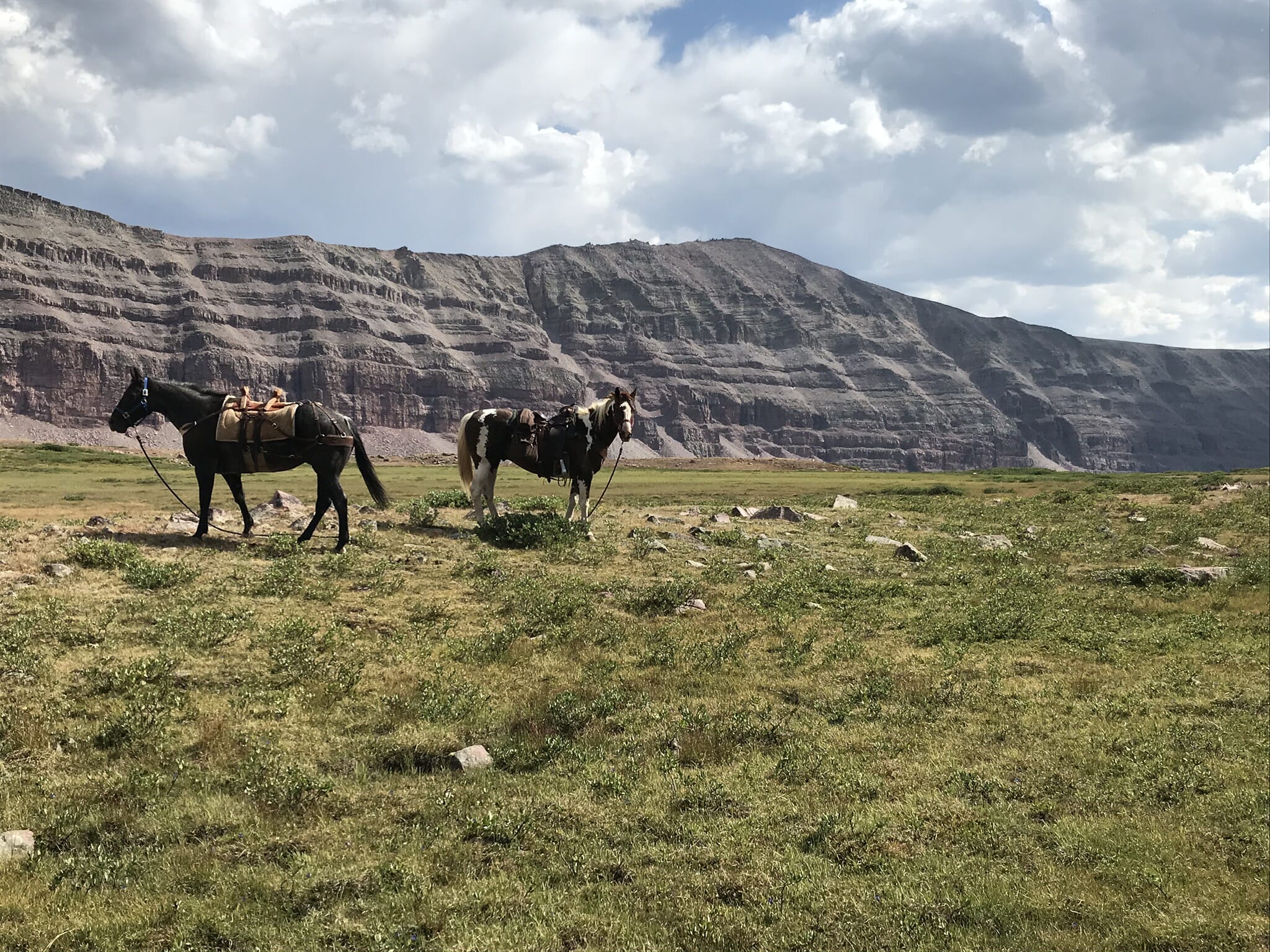A journey to wilds of Utah to restore a native fish stronghold
By Mike Fiorelli
Prolonged horseback trips into remote wilderness areas was actually part of the job description when I started working for Trout Unlimited. I kept reminding myself about that during the 26-mile ride into the High Uintas Wilderness of northeastern Utah for our planned eight-day journey into the high country.
Our goal was to conduct an assessment of the Ohweep drainage — a place we plan to make a stronghold for native Colorado River cutthroat trout.
This trip was my first long distance horse pack trip and I would soon find out I had a steep learning curve. We arrived at the trailhead and started saddling horses and figuring out how best to attach our gear. I learned how to tie a box hitch and secure a saddle.
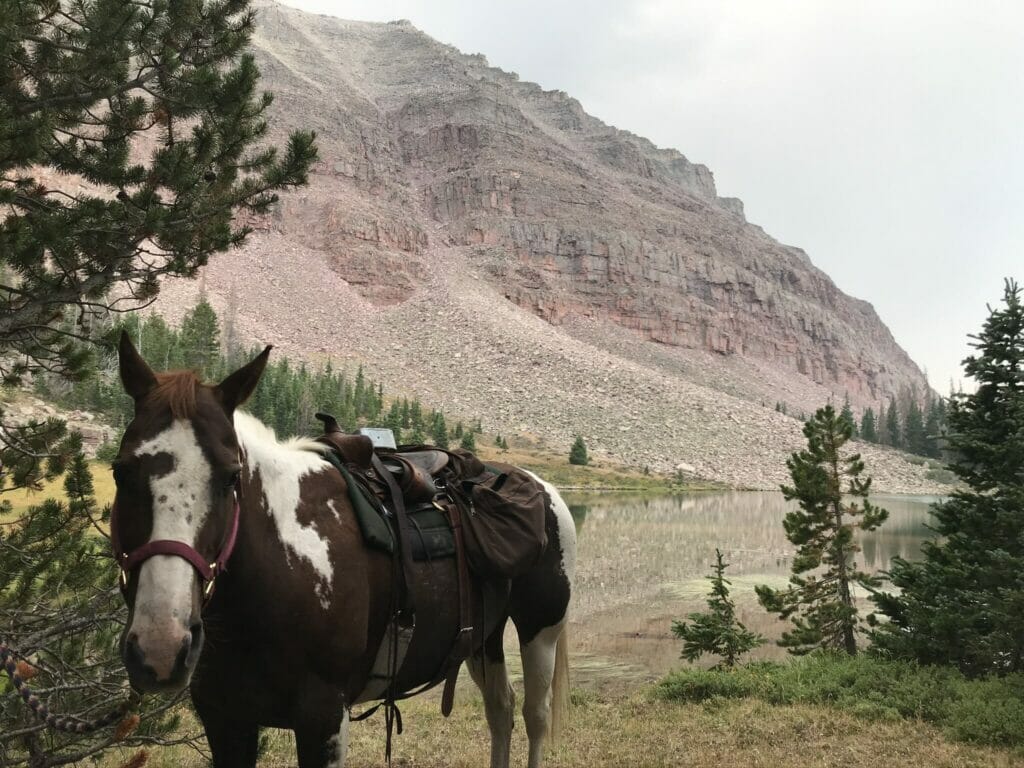
I was with Utah Division of Wildlife fisheries biologists Garn Birchell and Mike Slater. We had planned the trip with 10 horses. Our gear included typical pack gear along with an electrofishing unit, gill nets, measuring boards, flow meters and scales.
I tried to get to know Newt, an older painted gelding who was to be my ride, before we hit the trail and it seemed to pay off as the horse actually kind of responded to me during the ride. The first few hours went well, but then the pain started to set in. My knees seemed to be locked in a bent position, my back was throbbing, and we still had 12 more miles to go.
I decided it was time to get off and walk. I quickly learned four hours on a horse makes walking a bit challenging. After a short walk I climbed back aboard to try and finish off the ride, but darkness was setting in. Suffice it to say we didn’t make it the entire 26 miles to our basecamp on the first day. Even the horses had enough as the oldest horse in our group laid down in the trail signaling to everyone that it was time to make camp. Once camp was made, a warm dinner devoured and the horses tended to, I crawled into my tent wondering how I could survive seven more days.
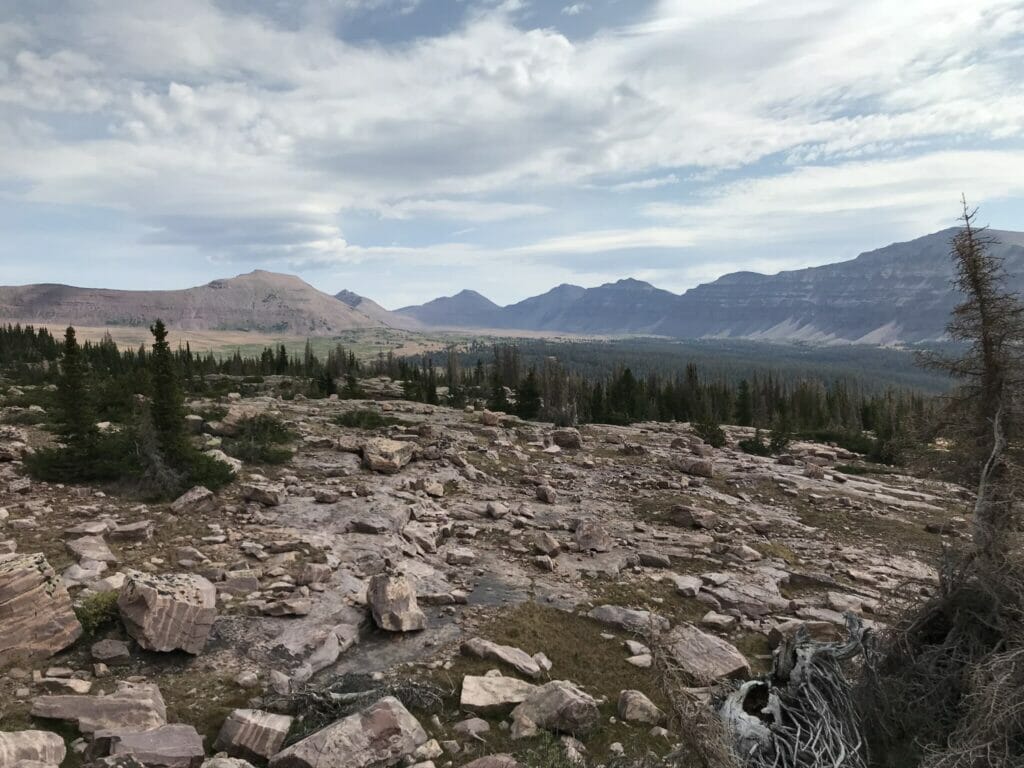
Surprisingly the next morning I woke up refreshed and the seven miles left to our basecamp were not as daunting. We reached camp and had a quick lunch before the real work was to start. Our goal for this trip was to evaluate the entire drainage to determine where natural barriers occurred and how much rotenone would be required to remove invasive brook trout.
Rotenone is a naturally occurring chemical derived from the root of the cube plant that interferes with cellular respiration of fish. In order to create a cutthroat stronghold, we will use rotenone to remove non-native brook trout from more than 18 miles of stream and two lakes. This treatment is one portion of a larger plan to restore Colorado River cutthroat trout to four different drainages on the south slope of the Uinta Mountains. Once completed these treatments, as well as other conservation measures that are being undertaken throughout Utah, Wyoming and Colorado, will help secure the future of this species and hopefully prevent its listing under the Endangered Species Act.
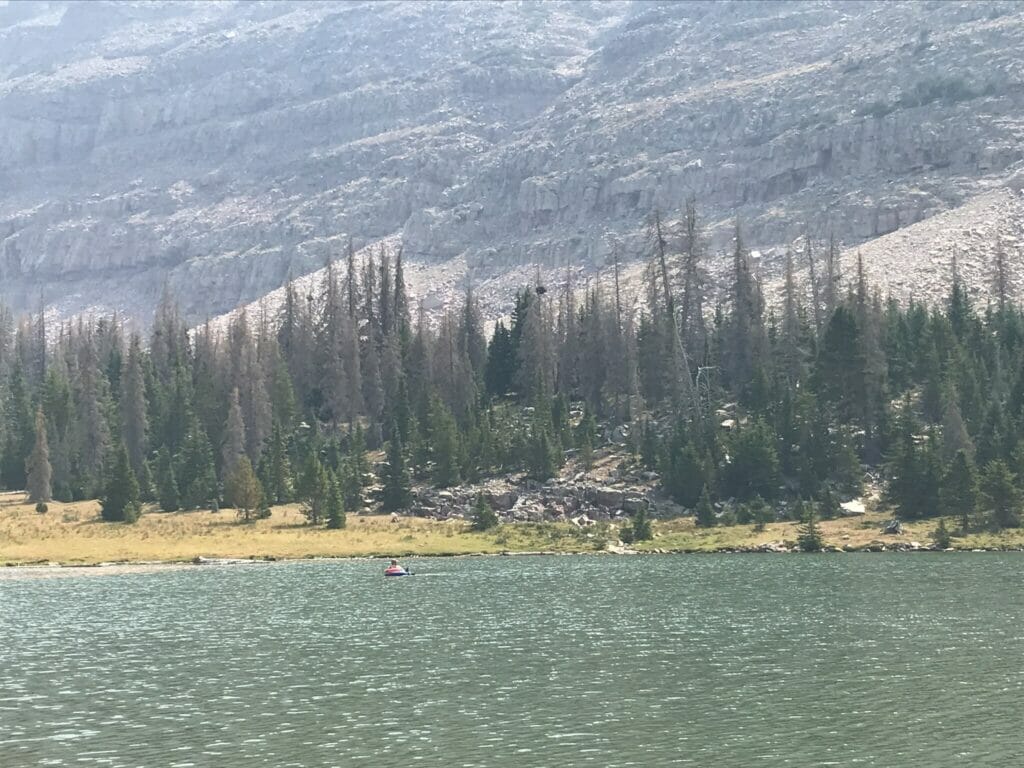
The first step was to head up to a lake at the head of the drainage and determine overall water volume and set a gill net to look at brook trout densities. Determining volume was done using a fish finder that recorded depths and location as we kicked around in a float tube. We also walked a portion of the stream to identify various seeps and springs that could hold brook trout during our treatment. The next few days were filled with similar tasks as we walked miles of stream identifying barriers and springs, and measuring flows. This data will be assembled into a comprehensive treatment plan that will guide our future rotenone treatment.
The next day we had one lake to survey and small portion of the drainage to walk. I was left at the lake to kick a float tube around in a gridded pattern so we could determine the volume of the lake. While I was in the middle of the lake, I noticed the smell of smoke and ash was falling from the sky. When you are over 20 miles into the backcountry smoke and ash in the air raises an alarm.
As we finished the survey, we started to see airplanes and helicopters but still did not see a large plume of smoke. However, once we left the lake the smoke column was visible, and it was difficult to tell through the thick smoke enveloping the valley if the fire was on our side of the drainage or over the ridge in the next drainage. We arrived back at camp late in the afternoon and used the satellite phone to determine that the fire was in fact in the next drainage but still within six miles of us. The threat of this fire forced our hand and the next day we woke up early to tear down camp and make the 26-mile ride back to the trucks, which I am glad to say was a far more comfortable ride.
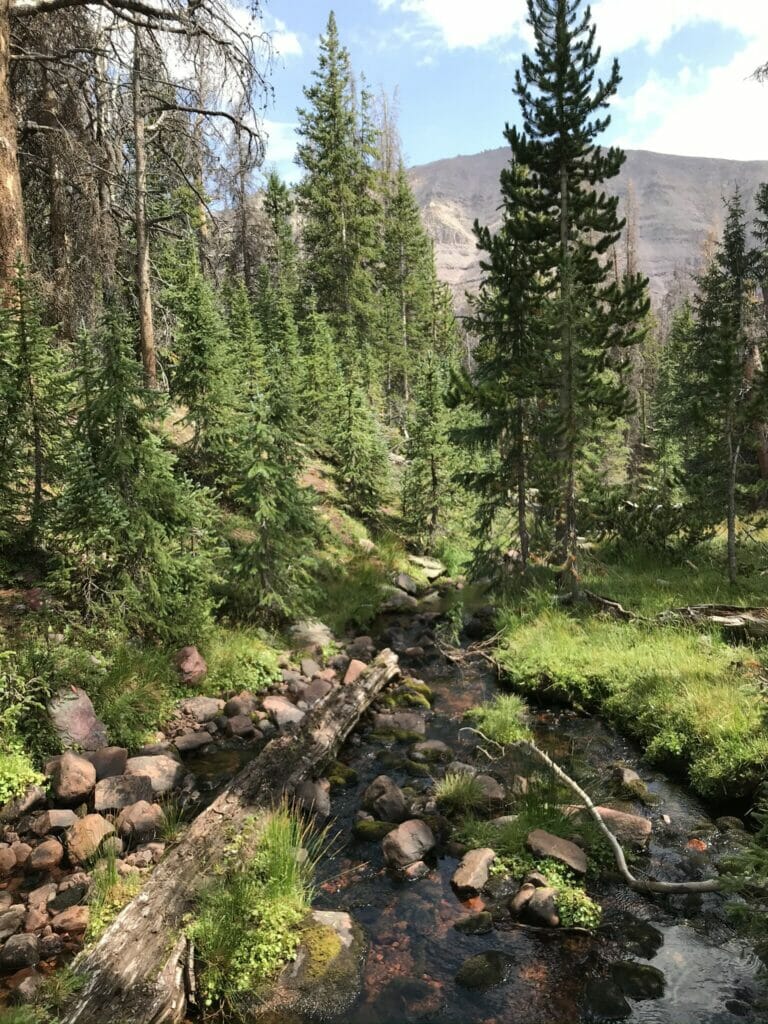
Unfortunately, the East Fork fire which started on Aug. 21, burned until snow put it out on Nov. 15, and it burned more than 89,643 acres. Most of the fire burned in the High Uinta Wilderness making it impossible to fight. It also leapt over the ridge and burned some of the lower portions of the drainage, but our treatment area was spared. Judging by the fires that blazed through the West in 2020, it appears they will continue to be a concern in the future — one more constant threat to rare and endangered species. This project and others that are slated throughout Utah will help to ensure the future of the Colorado River cutthroat trout for generations to come.
Looking into the future there are still a few tasks to finish before the scheduled treatment can start in 2022. I will be writing a comprehensive treatment plan this winter that details all the necessary steps that need to be executed for a successful treatment. We will also be revisiting the treatment area in the summer of 2021 to take care of some small details such as identifying where to put rotenone drips, and where the best place to detoxify the water is. I can honestly say in my 12 years in the fisheries field this trip was one of my most memorable and I can’t wait to get back on the trail again with Newt to visit this magical area again.
Mike Fiorelli is the Uintah Basin project manager for Trout Unlimited. He is based out of Vernal, Utah. He enjoys spending time with his family and dogs any way he can in the outdoors.



